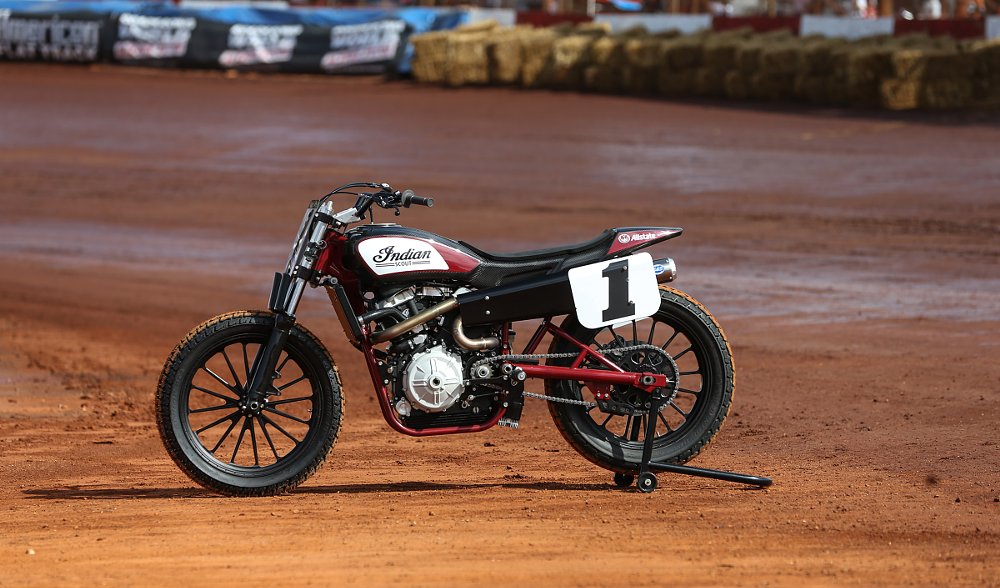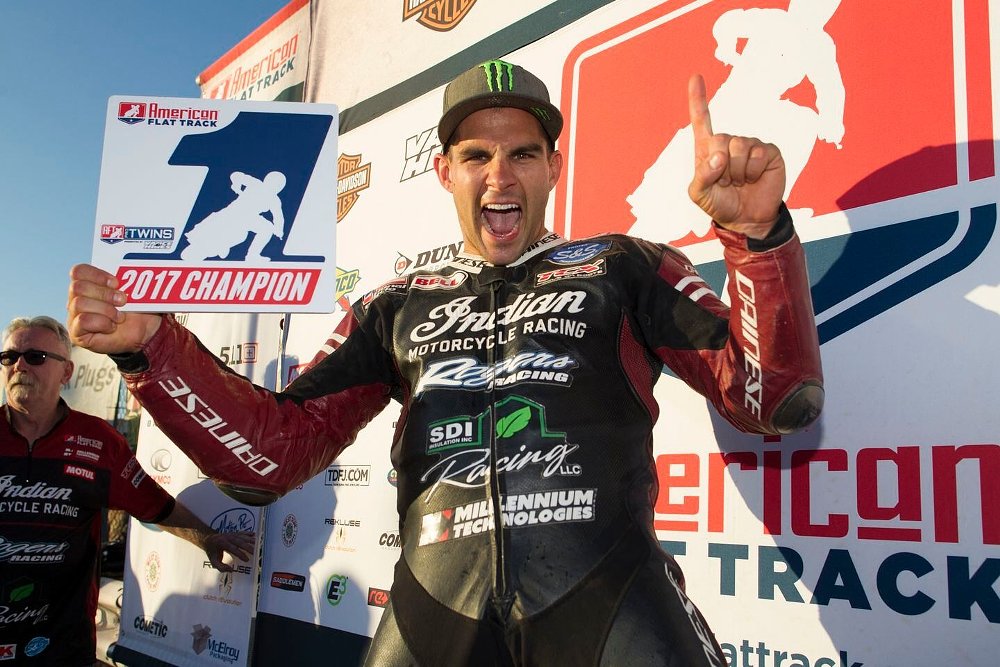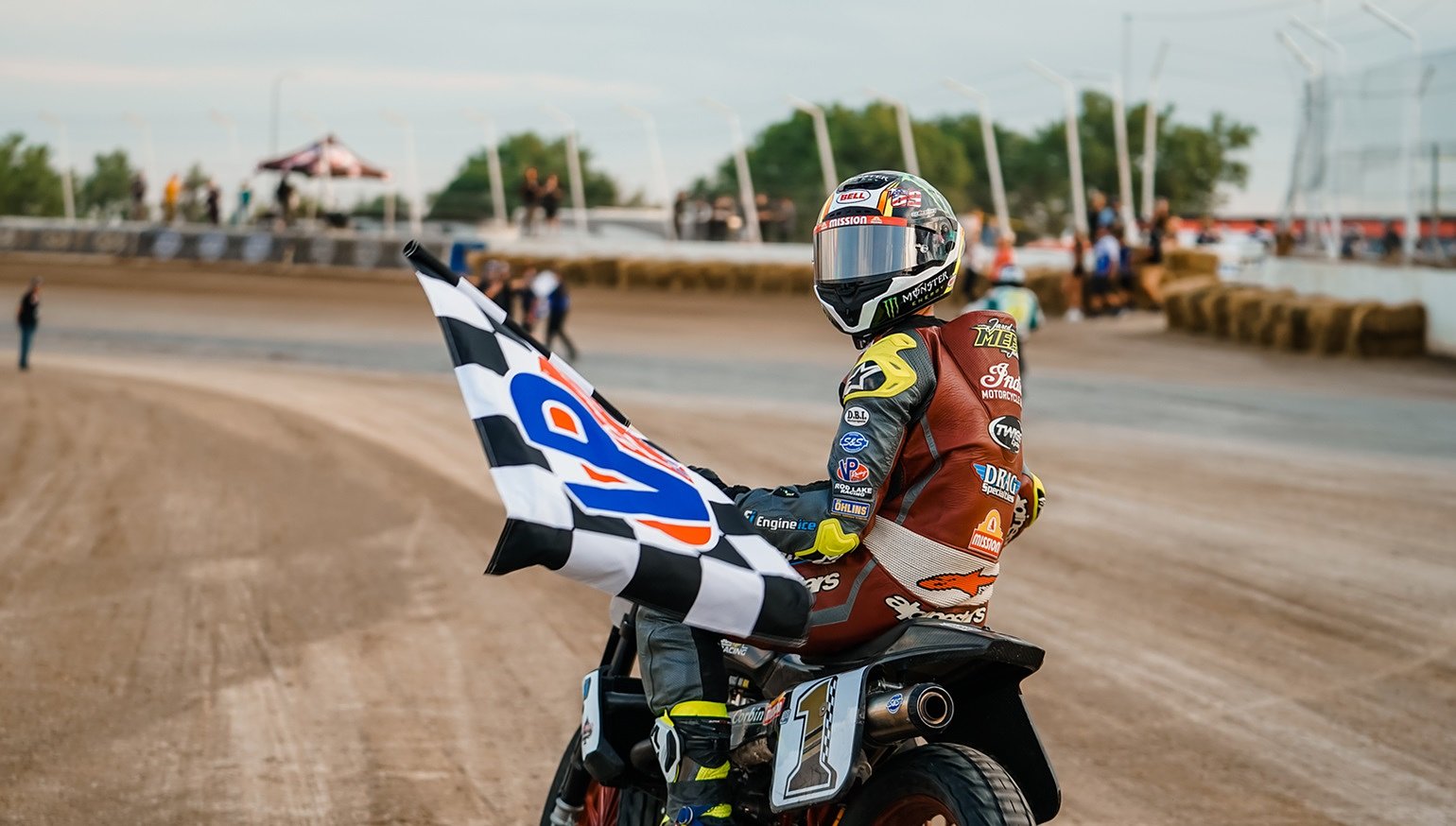Two major milestones were passed Saturday night as the Parts Plus Lake Ozark Short Track race ended the 2024 American Flat Track season. Jared Mees accomplished what some thought would never be done and won a 10th Grand National Championship, and the dominant reign of the Indian FTR750 came to an end.
It's not fake drama to say that AFT racing is not going to be the same going forward. It's also not clear what exactly the future will look like. But before getting into that, you have to give Mees his due.
Mees breaks Scott Parker's record of nine titles
Mees won the AFT SuperTwins main at Lake Ozark and easily clinched his fifth straight SuperTwins championship and his 10th career title in the premier class, surpassing Parker's long-standing record. Mees only needed to score three points to clinch, but he ended his and Indian's run in style with a win, as you can see in the highlights below.
Some thought Parker's record of nine titles would stand forever. The Hall of Famer won his championships in the 1980s and 1990s on the Harley-Davidson XR750, a flat-track racer that was also dominant in its time and lasted at the top far longer than the current Indian. But in the end, the pairing of Mees and the Indian broke the record of Parker and the Harley.
"Racing the FTR750 has been an incredible experience, as I've never experienced a bike like the FTR750 in all my years competing," said Mees. "We've had immense success over the past eight years, and it's been a true honor to be a part of the Indian Wrecking Crew."
The king is dead; so who's the next big dog?
Not many racing motorcycles can post a record like the Indian FTR750. There are mixed opinions in the flat-track world about whether that was a fair fight, but two things are clear: The numbers are impressive and the run is over, as the FTR750 won't be eligible for the series in 2025.

Indian debuted the purpose-built FTR750 in late 2016, but it didn't begin racing full-time until the 2017 season. Since then, riders on Indians have won every championship, won more than 75% of the main events, and filled more than 70% of all the podium spots. Some might stand in awe of those stats. Others would dismiss them as a case of unfair advantage, like entering a dolphin in a guppy race. Either way, the FTR750 era is over as only production-based engines are on the list of approved engines for 2025.
Those engines are also limited to 800 cc for liquid-cooled engines and 900 cc for air-cooled. If you want to race an Indian in SuperTwins in 2025, it's going to have to be a Scout 60 powerplant downsized. No more using a purpose-built race engine designed in Switzerland against Yamaha and KTM parallel twins pulled from street bikes.

Have all the rivalries left?
Once upon a time, flat-track racing was the battleground for an epic rivalry between Harley-Davidson and Indian. Then Indian fell by the wayside, others came and went, Harley-Davidson dominated for years. And then in recent years Indian returned and dominated. Harley-Davidson essentially disappeared in recent years, as hardly anyone wanted to race the unloved XG750R engine found in the company's Street line (which isn't even sold in the United States any more).
Could we see an Grand National Championship with no (or virtually no) Harley-Davidson or Indian entries? Will traditional flat-track fans still turn out to county fair horse tracks to watch a Yamaha-KTM rivalry? We are entering uncharted territory, race fans.
Meanwhile, no pun intended, but baggers racing has literally stolen flat-track's thunder. Harley-Davidson and Indian haven't stopped pouring money into racing. It's just that the huge transporters and well equipped teams with spiffy uniforms are over at the MotoAmerica Mission King of the Baggers series.
And can you blame them? The Harley-Davidson engines eligible for AFT SuperTwins in 2025 are from the Street models and the Pan America. The adventure bike accounts for 4% of Harley-Davidson's sales, while baggers are everywhere. Indian tried to cash in on the FTR750's success with the FTR1200 street bike, but it hasn't sold well and Indian has gradually evolved the street-legal FTR away from its original flat-track styling. Consider how many baggers you see on the street and how many FTR1200s you spot and ask yourself where you'd allocate the funds if you were in charge of the racing budget at either of the two major U.S. motorcycle manufacturers.
Mees and the FTR750 have secured a lasting spot in the AFT history books. Where the sport's future is going is more difficult to predict.








